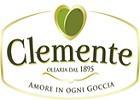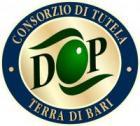
|
||||||||||||||||||||||||||||||||||||||||||||||||
|
||||||||||||||||||||||||||||||||||||||||||||||||
|
|
Brindisi
Brindisi is known as the Gateway to the East since ancient times, when it became an important port for the Roman troops first, and later for the merchants of Venice. A port that even today, provides important tourist and commercial connections to and from countries overseas.
The shoreline is low and sandy for the whole stretch of coast, favoured by a mild climate that extends the holiday season into Autumn.
Cultivated fields alternate, in a mosaic of colours, with large expanses of olive groves, vineyards and colourful orchards, interrupted only by roads and sporadic clearings. The city of Brindisi, located on the Adriatic coast, lies between two deep bays linked to the open sea by a narrow and deep channel, overlooked by the Castello Rosso (Red Castle), named for the particular colour of the stone used to build it. Instead, the Swabian Castle overlooks the western channel of the port and today is the venue of major cultural events. Among the sights not to be missed, the church of S. Giovanni al Sepolcro (Saint John Sepulchre) with a beautiful marble portal finely decorated and the Colonna Romana (Roman Column), once flanked by a twin tower that today is part of the structure of the famous Colonna di Sant’Oronzo (Column of Saint Oronzo) in Lecce. The beautiful city of Ostuni stands out against the intense green of the olive trees, with the whitewashed old town crossed by a maze of alleys and courtyards, low houses and narrow passages, overlooked by the majestic Cathedral. Beautiful sandy beaches are scattered along the coast, lapped by the clear water of the Adriatic sea and the colourful reflections of the Mediterranean bush and the alternation of sandy and rocky seabed strips. To the north of Ostuni there is one of the most interesting natural area in the region: the WWF Oasis of Torre Guaceto. The seawater seeps into the cliffs and the sandy bays and expanses of reed beds to find shelter close to the thick Mediterranean vegetation that covers the stretch of land. Ideal habitat for snipes, wild ducks, nightingales and amphibian species, but also for marine plant species such as posidonia oceanica meadows, sea fans and coral reef. Interesting is the archeological site of Egnazia, with important finds dating back to the Roman age and the presence of remains of even more ancient settlements. Continuing the journey inland, Cisternino is the “capital” of the Itria Valley, where white houses, narrow alleyways, courtyards and staircases, arches and balconies adorned with colourful flowers make up this small jewel of architecture. Historic medieval and Renaissance buildings make walking through the streets of the old town an even more interesting experience. The medieval period in this land finds its highest expression in the ancient fortified towns of the Murge. The Castle of Oria, built in the XIII century by Frederick II of Swabia, has a singular plant in the shape of a triangle and the Torre dello Sperone (Tower of the Spur) on the top, almost like the prow of a ship. The Cathedral and its beautiful polychrome dome and two towers, the bell and the clock towers, stand out gracefully from the rooftops of the town. Nearby, the Santuario di San Cosimo with a large porch and a statue of the Redeemer placed on top. We recommended to tour the small towns in the area, such as Mesagne, San Vito Normanno, Francavilla Fontana and Ceglie Messapica, that feature treasures of art and history and testimonies of a lifestyle long forgotten. Children and adults alike will enjoy a visit to the largest wildlife park in Italy, located a few kilometres from Fasano. Tigers, lions, bears, elephants, antelopes, giraffes, bison, deer, zebras and camels are free to roam around the park's area in a lush Mediterranean vegetation. Visitors can drive along the marked trails to admire these beautiful animals close-up. The park also offers the opportunity to visit the bird and tropical rooms, the metrozoo and the ocean area, each used to accommodate different species: parrots, Australian diamonds, alligators, snakes, bears, hippos, dolphins and penguins. In addition to the safari park, there is a large amusement park with over 25 major attractions for all ages. Healing therapies and beauty treatments to restore a physical and psychological balance are offered by the spas of Torre Canne, located in a splendid park with conifers, with a small lake fed by underground springs famous for their therapeutic properties. The WWF Oasis of Torre Guaceto offers interesting and fun opportunities to spend one’s free time immersed in an extraordinary nature. Paths and cattle tracks routes are ideal for practicing ciclotrekking or take long and relaxing walks. The crystal clear waters of the sea, with their play of colours ranging from emerald green to dark blue, are the ideal place to enjoy sea-watching and snorkelling, and admire the beauty of the seabed.
Moreover, why not try a full day of yoga, immersed in the silence of this beautiful natural environment. Walking along the alleys of the village, one can relive scenes of rural life, set in the faithfully reconstructed workshops, and enjoy delicious tastes of the traditional local cuisine. The most important moment of the celebrations is the traditional procession known as Cavalcata di Sant’Oronzo.
The flavours of the land of Brindisi reflect the identity of the best culinary tradition from Apulia. Vineyards and olive groves ensure the production of high quality DOC wines, and extra virgin olive oils of high quality protected in this area by the appellation DOP Collina di Brindisi.
Excellent is also the production of fresh or mature cheeses made from the milk of local farms, such as ricotta, cacioricotta and pecorino (sheep milk cheese). The mandorla riccia (curly almond) is a typical confectionery product from Francavilla Fontana, crisp outside and crunchy inside. The biscotto cegliese with toasted almonds, cherry and lemon marmalade is a tasty pastry made in Ceglie Messapica.
Source: Minister for Regional Affairs-Sport & Tourism. |

|
||||||||||||||||||||||||||||||||||||||||||||||
|
||||||||||||||||||||||||||||||||||||||||||||||||



